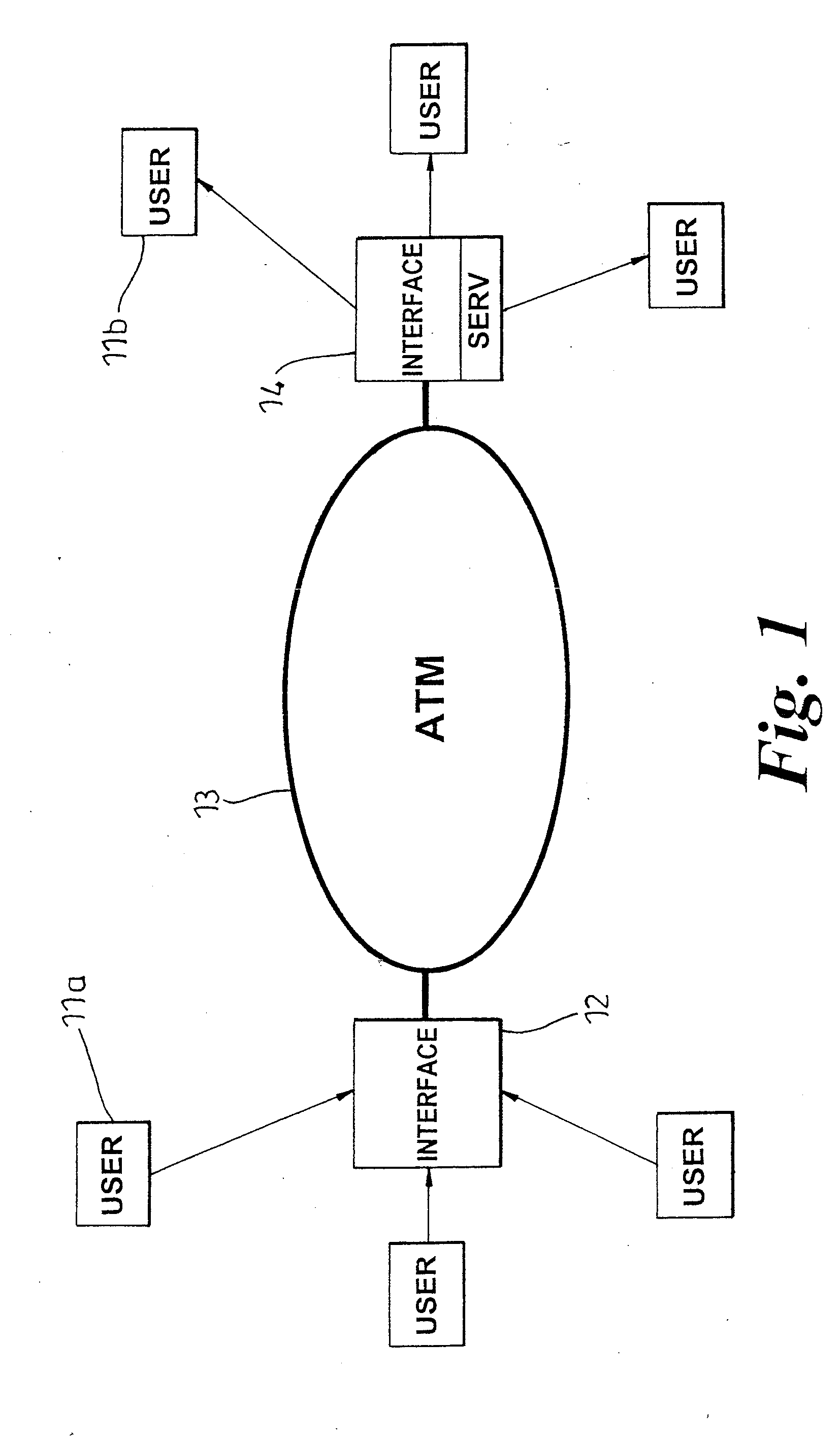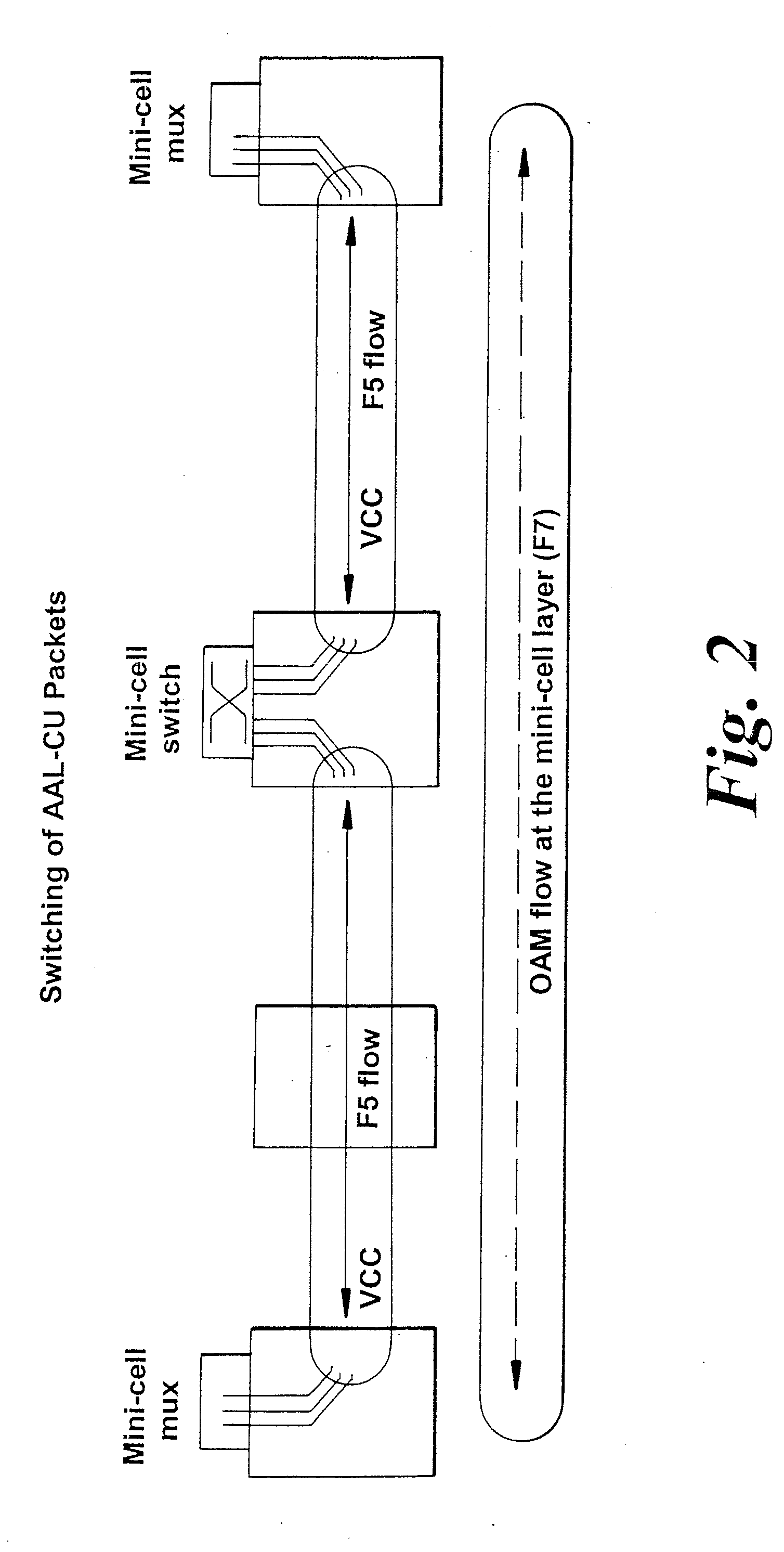ATM communications system and method
a communication system and atm technology, applied in the field of telecommunications technology, can solve the problems of no intrinsic mechanism to mitigate the effect, no effective adaptation of the different requirements of the system user, error, etc., and achieve the effect of reducing the amount of control or overhead information and freeing the bandwidth
- Summary
- Abstract
- Description
- Claims
- Application Information
AI Technical Summary
Benefits of technology
Problems solved by technology
Method used
Image
Examples
Embodiment Construction
[0023]Referring first to FIG. 1, traffic from a number of users 11 is routed to an interface 12 where assembly of user minicells and multiplexing of those minicells into ATM cells is performed. The assembled ATM cells are provided with appropriate header information and are transmitted across the ATM network 13 to an egress interface 14 where cell disassembly and de-multiplexing is performed to recover the user traffic. An AAL-CU adaptation layer employed in the network of figure is separated into two parts, a Common Part Sub-layer (CPS) and a Service Specific Convergence Sub-layer (SSCS).
[0024]The list of identified requirements for the Common Part Sub-layer includes:[0025]support multiplexing of multiple users into a single connection;[0026]ability to delineate mini-cell boundaries within the ATM payload;[0027]error detection across AAL-CU common part information;[0028]protection against mis-concatenation due to ATM cell loss or mini-cell common part information corruption—to enab...
PUM
 Login to View More
Login to View More Abstract
Description
Claims
Application Information
 Login to View More
Login to View More - R&D
- Intellectual Property
- Life Sciences
- Materials
- Tech Scout
- Unparalleled Data Quality
- Higher Quality Content
- 60% Fewer Hallucinations
Browse by: Latest US Patents, China's latest patents, Technical Efficacy Thesaurus, Application Domain, Technology Topic, Popular Technical Reports.
© 2025 PatSnap. All rights reserved.Legal|Privacy policy|Modern Slavery Act Transparency Statement|Sitemap|About US| Contact US: help@patsnap.com



